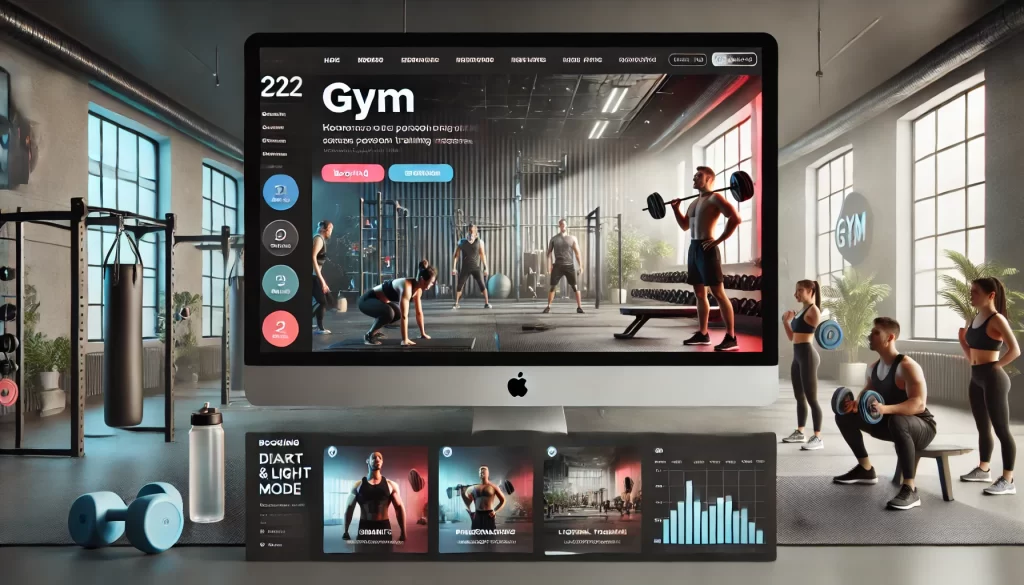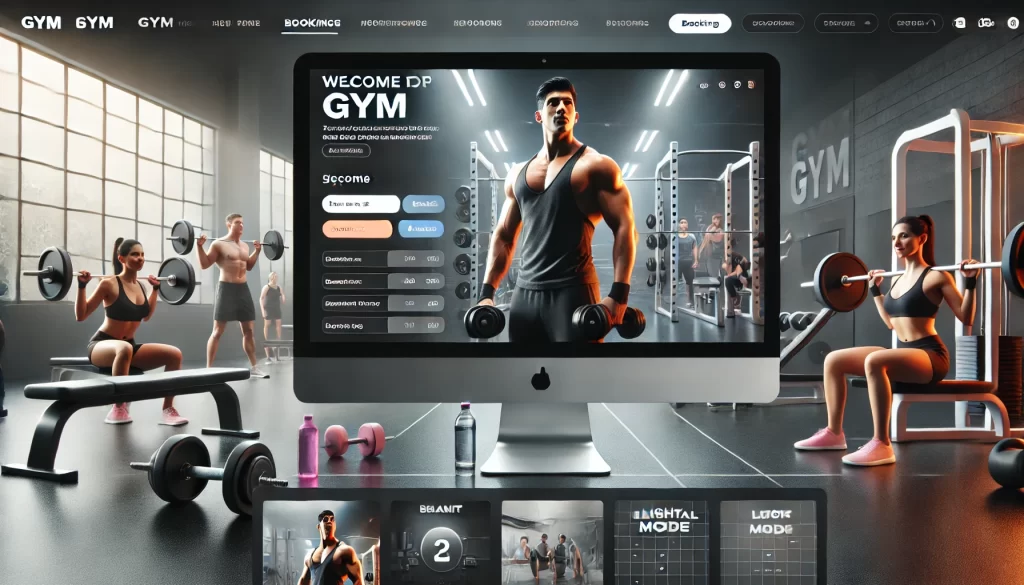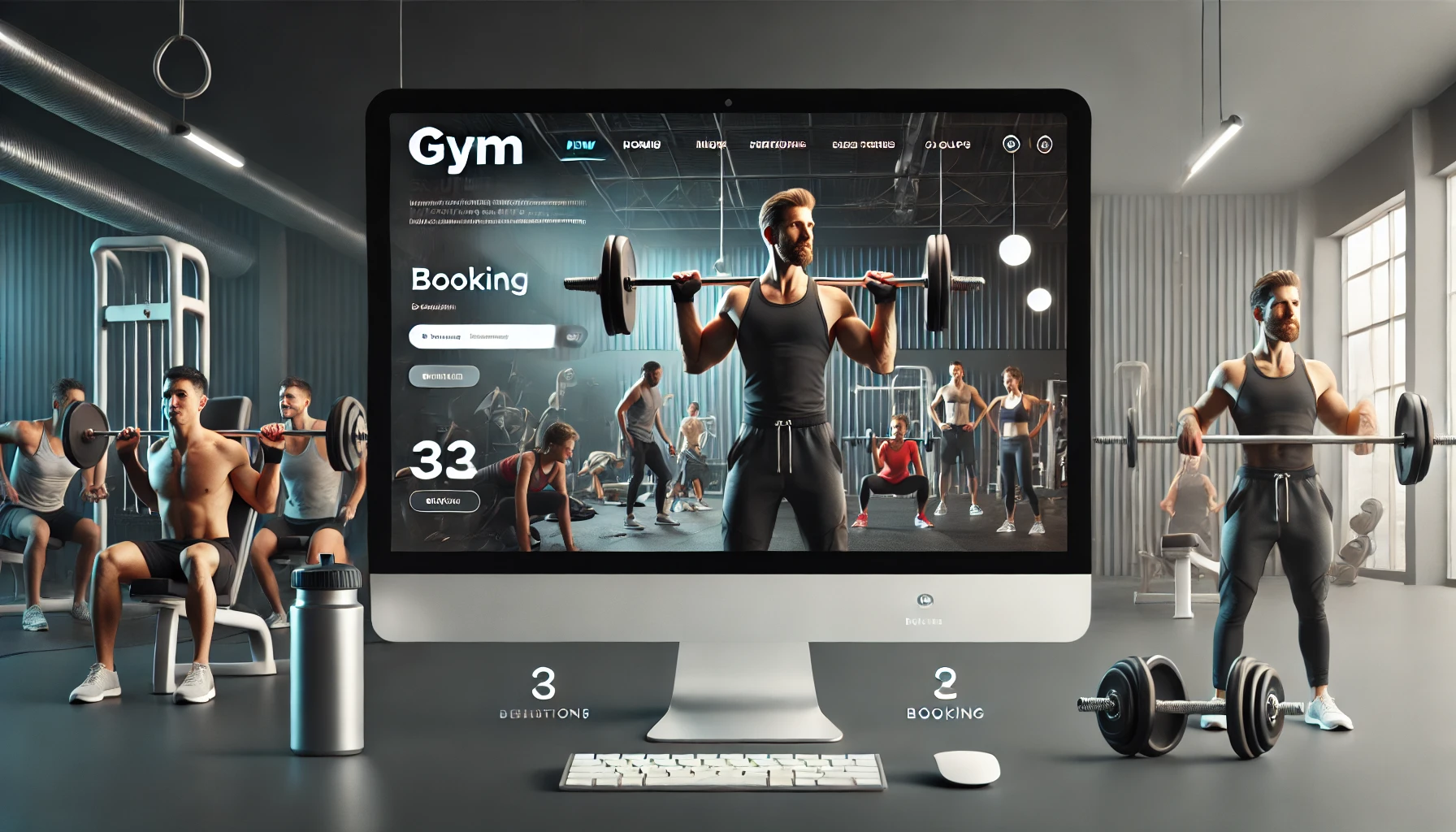Introduction
In today’s digital age, a gym’s website is often the first point of contact for potential members. Just as the physical space should be clean, organized, and welcoming, the online space must create the same impression. A well-designed gym website is more than just a placeholder on the internet, it serves as a powerful marketing tool that can convert visitors into long-term members. But what makes a gym website truly stand out?
When creating or evaluating a gym website, several factors come into play. User experience (UX), visual appeal, and functionality all contribute to the site’s success. It’s about more than just looking good, it’s about creating an experience that makes it easy for people to navigate, book classes, and become part of your fitness community. In this post, we’ll explore the essential elements of top-tier gym websites and showcase examples that exemplify these traits.

Related Posts
What Makes the Best Gym Websites?
A standout gym website must be functional, visually appealing, and user-friendly. Several key components make a gym website not only attract visitors but also turn them into clients. Let’s dive into what makes the best gym websites stand out.
Aesthetic Appeal – Colors, Imagery, and Layout
First impressions matter, and when it comes to gym websites, the first impression begins with the design. The aesthetic appeal of a website can determine whether a visitor stays or bounces.
The best gym websites use a clean, modern layout that complements their brand identity. Bold imagery, clear typography, and an intuitive color scheme set the mood for the visitor. Colors such as energetic reds, calming blues, and earthy greens can evoke different emotions, from motivation to relaxation. Gym websites often use high-quality images of happy, healthy people to visually communicate what potential members can expect—fitness, vitality, and a sense of community.
Functional Elements – Booking Systems, Member Portals, and Class Schedules
Today’s gym websites must go beyond the basics of information sharing. The best gym websites integrate essential functions like booking systems, member portals, and class schedules. These elements save users time and make it easy for them to interact with the gym’s offerings without needing to pick up the phone.
An online booking system should allow users to easily book classes, personal training sessions, or even gym tours. The class schedule should be easy to navigate, showing available times, instructors, and class types. A member portal is also a key feature, enabling current members to access their profiles, track progress, manage memberships, and even book appointments.
Mobile Responsiveness and Fast Load Times
A modern gym website needs to be mobile-responsive. A growing number of potential members will visit your website on their smartphones, and if the site is hard to navigate or slow to load, they’ll simply move on. The best gym websites prioritize mobile responsiveness, ensuring that visitors on any device have a seamless experience.
Additionally, website speed is critical. Slow-loading pages can frustrate users, leading to higher bounce rates and lower conversions. Optimizing your website for fast load times is not just a matter of convenience, it also improves SEO and can directly impact your ranking on search engines.
Content – Clear Services, Pricing, and Gym Benefits
Content is another pillar that contributes to a gym website’s success. The best gym websites communicate the benefits of their services clearly and succinctly. Pricing pages should be transparent, giving visitors a clear understanding of membership options, fees, and any special promotions or discounts.
Moreover, the content on the site should speak to the target audience. Whether it’s a focus on bodybuilding, yoga, CrossFit, or family-friendly workouts, the best gym websites tailor their messaging to resonate with specific fitness goals. Testimonials, success stories, and member reviews also add trust and credibility to the content.

Related Posts
Top 10 Best Gym Websites
Here are 10 of the best gym websites that have nailed the essentials of good web design, functionality, and user experience.
- SoulCycle
- Unique Features: Sleek, minimalist design with emphasis on lifestyle. Their website integrates video content, showcasing the energetic environment of their classes.
- Gold’s Gym
- Unique Features: Clean navigation, easy-to-find class schedules, and a prominent membership sign-up area. A responsive design that works perfectly across devices.
- Equinox
- Unique Features: Luxurious aesthetic with high-end imagery. Their website does a great job showcasing various services from fitness classes to wellness retreats.
- Planet Fitness
- Unique Features: Bold use of color and high-quality images that resonate with their approachable, welcoming brand. The online sign-up process is smooth and easy.
- CrossFit
- Unique Features: Clear and concise design, emphasizing community and the strength of the CrossFit network. Their training programs and membership sign-up are easy to navigate.
- LA Fitness
- Unique Features: Comprehensive member portal and fitness tracker integration. The website makes it easy for members to track progress and book sessions.
- F45 Training
- Unique Features: Great use of visuals to show their fast-paced, circuit-style workouts. The site includes a clear class schedule, and booking is a breeze.
- Orangetheory Fitness
- Unique Features: Their website showcases real-time class availability, allowing users to book a spot easily. Clean design with attention to fitness-related content.
- YMCA
- Unique Features: Family-oriented gym with a website that balances functional and community-based content. The membership area is easy to access, and the class schedule is well-organized.
- Anytime Fitness
- Unique Features: Global brand with a locally oriented focus. Their website allows users to easily find a gym near them and offers a seamless user experience on mobile.
Why Design Matters for Gym Websites
Website design plays a critical role in determining how visitors interact with a gym online. The design can influence both the first impression and long-term customer retention. It’s not just about aesthetics; it’s about creating a user experience that encourages conversions.
First Impressions
A well-designed gym website offers a welcoming environment that sets the tone for the visitor’s relationship with the gym. A clean, modern website can suggest professionalism and reliability, encouraging visitors to take the next step, whether that’s signing up for a membership, booking a class, or just exploring the gym’s offerings.
Conversion Rates and Customer Retention
A gym’s website can directly affect conversion rates. A user-friendly, intuitive website that loads quickly and provides all the necessary information in one place is much more likely to convert casual visitors into paying members. Features like easy class bookings, visible pricing, and engaging content can encourage people to sign up sooner. Moreover, a well-constructed website can keep existing members engaged. Offering an online portal for tracking progress, renewing memberships, or booking sessions makes it easier for members to stay involved with the gym, improving retention rates.
Key Takeaways
Building the best gym website involves focusing on user experience, design, and functionality. From seamless booking systems to engaging content and responsive design, every element plays a part in converting visitors into loyal members. Take inspiration from top gym websites to create one that stands out and enhances your gym’s digital presence.
- A gym website should be mobile-responsive, fast-loading, and visually appealing.
- Functional features like booking systems and member portals are essential for user engagement.
- Clear content, including services, pricing, and class schedules, builds trust and increases conversions.
- Top gym websites serve as excellent examples of how to create a user-friendly and professional online experience.
A gym website is much more than an online brochure, it’s a vital tool for attracting and retaining members. The best gym websites prioritize user experience, clean design, and easy-to-use functionality. Features like mobile responsiveness, booking systems, and clear content go a long way in converting website visitors into loyal gym members. As you consider redesigning your gym’s website or building one from scratch, take inspiration from the top examples shared above. Focus on making the site as functional and engaging as possible, and remember that first impressions count.
FAQs
What should a gym website include?
A gym website should include clear services, class schedules, pricing, booking systems, and a member portal. High-quality imagery and responsive design are also essential.
How important is mobile responsiveness for a gym website?
Mobile responsiveness is crucial as many users will visit your gym’s website on their smartphones. A mobile-friendly design ensures a seamless experience across all devices.
How can I improve my gym’s website conversion rate?
Simplifying navigation, integrating an easy-to-use booking system, displaying clear pricing, and showcasing testimonials can significantly improve conversion rates.
What features make a gym website stand out?
Features like fast load times, a well-organized class schedule, member portals, and high-quality visuals make a gym website stand out.
Is it necessary to have a blog on a gym website?
A blog can help engage visitors by sharing fitness tips, gym updates, and success stories. It also boosts SEO and provides fresh content to visitors.
Can a gym website help with member retention?
Yes, a website can play a huge role in member retention by offering online member portals, class bookings, and fitness tracking, which help keep members engaged.
